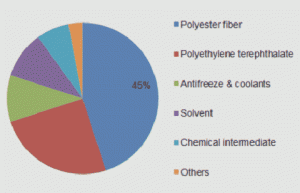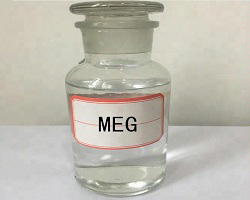
Mono Ethylene Glycol
Azin Commercial Industrial Group with more than 5 years of experience and activity in the field of production and supply of more than 20 types of chemical products, Provides you with Mono Ethylene Glycol (MEG), purity 99.8%.
Here you can see some mor MEG chemical information.
facts
These are just some of the facts that define us:
- Right management
- best technicians
- quality and workmanship
- lowest price
- customer care
- international standards

Introduction of ethylene oxide
Ethylene oxide, called Oxirane by IUPAC, is an organic compound with the formula C2H4O.
It is a cyclic ether and the simplest epoxide: a three-membered ring consisting of an oxygen atom and two carbon atoms.
Ethylene oxide is a slightly viscous liquid with a clear, colorless appearance and a sweet taste that emits virtually no odor. It’s often miscible with water, alcohol, and many similar organic compounds.
Ethylene oxide may polymerize exothermically if heated or contaminated.
If the polymerization takes place inside a container, the container may rupture violently
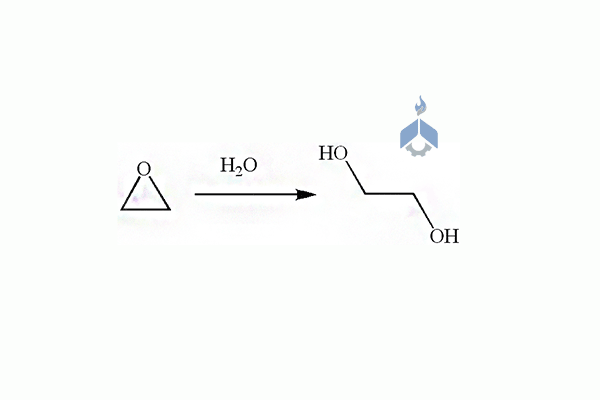
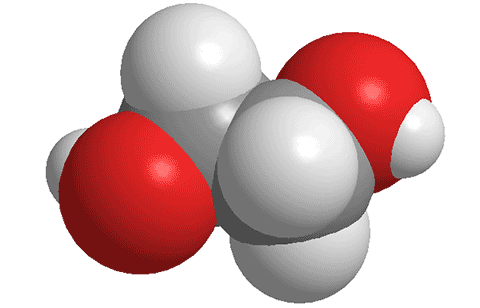
Process Description of Ethylene Glycol Plant
The schematic flow diagram of a commercial Ethylene oxide hydration plant shown below is designed to produce a maximum quantity of ethylene glycol. The raw materials for the plant are refined ethylene oxide and pure water. After being preheated by the exit product stream, these materials are mixed with recycled water and pumped into the hydration reactor. In the glycol reactor, sufficient time is provided for all the ethylene oxide to react.
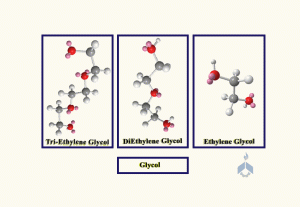
The operating pressure of the reaction is controlled in a way to avoid or limit the vaporization of ethylene oxide from the aqueous solution.
Literature shows that commercial reactors operate at 190-200 ° C and will be at pressures 14-22 atm depending on the initial concentration of the oxide.
The water-glycol mixture from the reactor is fed to the first stage of a multi-stage evaporator, which is boiled with steam. The remaining stages operate at successively lower pressures, with the final stage normally being under vacuum. The evaporated water is recovered as condensate and recycled back to the glycol reaction feed mixing tank.
The water-free glycol solution is sent through a series of vacuum distillation towers to produce purified mono ethylene glycol and by-product di- and tri ethylene glycol.

MEG chemical information
Mono-ethylene glycol is an organic compound with the formula C2H6O2.
It is a slightly viscous liquid with a clear, colorless appearance and a sweet taste that emits virtually no odor.
It’s miscible with water, alcohols, and many similar organic compounds and is primarily used in the industry for manufacturing polyester fibers and as a component in the production of antifreeze, coolants, aircraft anti-icers, and de-icers.

Application usage of Mono-Ethylene Glycol
These applications are vital in the manufacturing of a wide variety of products, including: Resins Deicing fluids Heat transfer fluids Automotive antifreeze and coolants Water-based adhesives Latex paints and asphalt emulsions Electrolytic capacitors Textile fibers Paper Leather Desiccant in gas pipelines Chemical intermediate in the production of capacitors
Chemical and physical properties of DEG
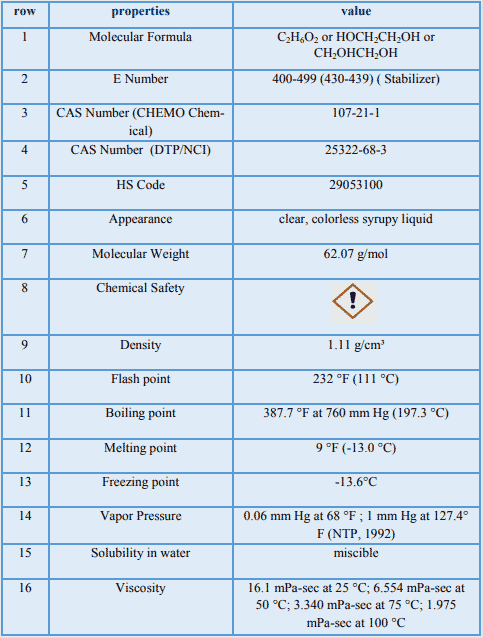

Analysis of dEG
Model development
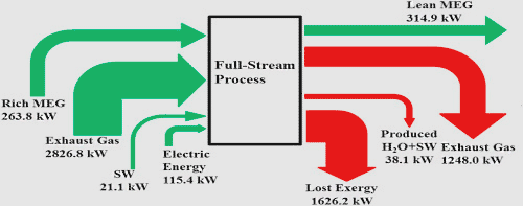
MEG (Mon-Ethylene Glycol) is a hydrate inhibitor used for the recovery of subsea oil and gas.
For practical and economic reasons, it is necessary to extract and re-use the MEG through a regeneration unit that removes hydrocarbons, water, and salts.
The economic performance of the regeneration process depends on MEG losses and the amount of heat and power required for the separation.
Recovering as pure MEG as possible without disturbances induced by salts is important in maintaining process sustainability.
Hydrate inhibitor recovery from the reclamation is in the range of 99.4%–99.5%.
It is also found that energy used for the separation of MEG from water in the re-concentration unit accounts for at least 60% of total energy consumption.
MEG safety information and maintenance
According to the information in the safety sheet and chemical considerations of monoethylene glycol, regarding the use of toxic organic compounds, it is very important to pay attention to the following:
- Ethylene glycol contains highly toxic vapors. Inhalation of its vapors cause poisoning.
- The flash point of ethylene glycol is 111 ° C, so never store packages containing this substance near heat or sources of ignition and fire.
- Keep monoethylene glycol barrels away from acid containers or other active chemical compounds such as oxidants.
- The warehouse should have proper ventilation.
- Everyone who deals with ethylene glycol should wear special work clothes, glasses, masks and gloves.
- Ethylene glycol storage containers must have a safety information label.
Azin Commercial Industrial Group with more than 5 years of experience and activity in the field of production and supply of more than 20 types of chemical products, Provides you with Mono-Ethylene Glycol (MEG), purity 99.8%.
For more information about the products and place order please contact us.
We try to provide you best Product withe easy and fast delivery around the world withoute delay.
It’ll be our pleasure to know your opinion and experience or any point of view in which Azin can performs better.
Comment your outlook on MEG commerce

